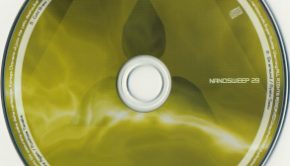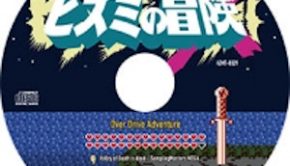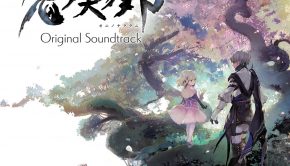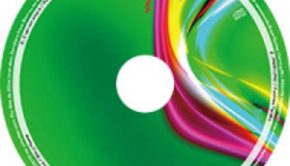Tecmo Arcade Game Chronicle
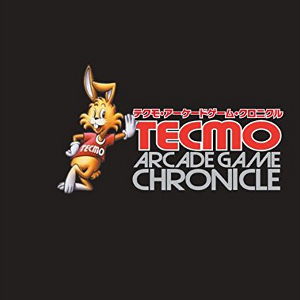 |
Album Title: Tecmo Arcade Game Chronicle |
| Record Label: Sweep Record |
|
| Catalog No.: SRIN-1104 |
|
| Release Date: June 7, 2014 |
|
| Purchase: Buy at Sweep Record |
Overview
The Tecmo Arcade Game Chronicle is the latest compilation release from SuperSweep. Chronicling the rich history of Tecmo’s arcade games, from the earliest release of Pleiads in 1981 (while Tecmo was still known as Tehkan) to CR Urusei Yatsura 2 (a pachinko game released in 2005 by OKUMURA). Along the way, soundtracks for hit games such as Ninja Gaiden, Bomb Jack, Tecmo Cup, Rygar, and Riot are featured. Not all the music is perhaps the most complex or well-composed, but what is offered is a rich variety of sounds. In addition to the seven soundtrack discs, there are also three DVDs that come with the release featuring gameplay videos, a composer round table discussion, and a data disc, making it a highly impressive collector’s item. The accompanying booklet is also excellent.
Body
The first disc featured on the soundtrack perhaps has the most content from the earliest games from 1981 to 1986; therefore, it’s not the most substantial disc in terms of quality tunes, but one that manages to showcase the early history of Tecmo. Pleiads, released in 1981, is the earliest game on the soundtrack release. The single tune “Main BGM ~ Game Play~ is a mixture of the main theme, which has a very mysterious sound, alongside sound effects and even a combination thereof. It isn’t a substantial part of the release, but one that does pay homage to some of the earliest arcade music. Swimmer, released in 1982, is another short release, whose music is quite bubbly and upbeat, matching the imagery in the game quite nicely. The subsequent year’s Guzzler isn’t as impressive melodically, although it does fit with the quirky nature of the game, which involves a maze-like environment where you must extinguish the various flames with your water powers. SENJYO, also released in 1983, is a shooting game where you fire from a fixed turret at aliens on the screen. Written by Wonder Boy’s Shinichi Sakamoto, the music seems to be progressive in nature, changing from a slow pace with the “Long Distance” theme to a more frenetic sound with the “Short Distance” theme, most likely changing due to the distance of the enemies from your location. The name entry music for this game is also quite upbeat and is a highlight.
1984’s Bomb Jack is quite unique in that in addition to the original music composed by Megami Tensei‘s Tsukasa Masuko, it also features licensed music from two very popular sources. The main BGM is quite bubbly and bright and makes for a great listen, as do the two name entry themes. “BGM2 (Kittens in the Apple Forest)” is the ending tune from a Japanese animation, Spoon Obasan, and is a very fun tune. “BGM3 (Lady Madonna)” was licensed by Tehkan and is a chiptune rendition of the Beatles tune of the same name. Star Force, also released in 1984, is a vertical shoot-em-up also composed by Masuko. The music features a variety of tones from darker, ominous tunes to more bubbly and bright ones. It isn’t Masuko’s greatest work, but it does have some charm to it. Gridiron Fight is an arcade football game released the following year, this time featuring music from Tokimeki Memorial‘s Mikio Saito (aka Metal Yuhki). The “Start” music has a very anthemic sound with some clear marching influence as well, while the main BGM of the game is very energetic, although not too memorable. Pinball Action, also released in 1985, features a very short soundtrack as well. There are four main BGM themes and two name entry themes, the latter two being the most substantial. The main BGM themes are rather repetitive and don’t really bring anything to the table but both the name entry tunes are quite enjoyable, bringing a very victorious tone with them.
Tecmo Cup was an iconic soccer game released in 1986 and again scored by Tsukasa Masuko. The “In-Game BGM” is really energetic and is probably the best thing on the first disc. The melody is bright, memorable, and really catchy, albeit slightly repetitive, and the implementation is quite impressive for the time. Reflecting Masuko’s tendency to adapt existing music, the ending theme is a chiptune version of choral tune “Jerusalem” by Sir Charles Hubert Hastings Parry and thus has a bit more of an edge due to the percussion. Both “Game Over ~ Ranking” and “TSUK” are also very upbeat and enjoyable songs. There is also some music, although not particular memorable from an arcade game called Au!; perhaps the most obscure addition to a compilation filled with rarities, this game was not even released. The last featured soundtrack from the first disc is for a game called Lovely Cards, which was released in 1985, and seems to be a virtual poker game with an adult theme. The music itself isn’t particularly great, though it does have a slight charm to it.
The second disc, featuring music from 1986 and 1987, opens up with the music for the original arcade version of Rygar released in 1986, a series that has seen revivals on later platforms like the Playstation 2 and Wii. Masuko’s main theme for the game has quite a groovy accompaniment with some ominous tones in the melody line. “Indra’s Fighting Spirit” is an upbeat tune, although a bit on the repetitive side. The “Name Entry 1” music also has a very victorious quality to it, but also one that has an almost heavenly sound to it, while “Name Entry 2” has a more ominous tone. Solomon’s Key, a puzzle game released in 1986, features several themes; however, most of them, including the main BGM and name entry tunes, are a bit on the repetitive side and don’t offer anything particularly memorable, but manage to give off varying tones, such as victorious tones or even panic-inducing tones indicating time is running out. There are also a handful of unused tunes. Tee’d Off, a golf game released in 1986, offers three main tunes, one for longer holes, one for shorter holes, and one for a seaside course. The tunes for these scenarios are all fairly enjoyable. In addition, there are some name entry tunes that offer jovial atmospheres that are pleasant to listen to as well.
The last entry on the second disc is also the most substantial. With the improvement in technology, the games grew more elaborate and so did their scores. Gemini Wing, a vertical shoot-em-up released in 1987, features plenty of stage and boss themes. The stage themes offer quite an array of tones, from the flighty “Round 1,” to the mysterious “Round 4,” to the determined sound of the final stage theme, “Round 7.” Each of the stage themes is also relatively lengthy, providing a suitable listen for those expecting a bit more out of their music. As for the boss themes, like most arcade shoot-em-ups of the era, they are much sparser in terms of development, but offer a fitting blend of chaos and ominous tones to provide a varied, although somewhat superficial listen. Mikio Saito also ensures the soundtrack is impressively well-implemented for its time, using multiple voices and strong samples throughout.
Discs three and four are home to the music from games released during the years 1998 and 1989. Tecmo Bowl, an extremely popular American football arcade game, features some fantastic music. Both the red and blue offense tunes provide pumping music that would be welcome on any shoot-em-up or even platformer. Sure, it feels a bit out of place for a football game, but the music is quite awesome and is definitely a highlight from the whole release, even if the majority of the music from this particular soundtrack isn’t memorable. That said, Silk Worm features a short soundtrack that isn’t too impressive. The main BGM for this shmup is quite lackluster, failing to really develop at all. While the boss theme is frenetic and capturing the intensity of a battle, it falls into repetition quite quickly and becomes a bit tiresome. There is more substantial unused tune featured as well, and while it is more creative than the main BGM or boss theme chosen, it is definitely experimental in nature and doesn’t quite flow too well. BACK FIRE, a horizontal shoot-em-up, features some nice music from Mikio Saito though. “Start ~ BGM1” is a very airy tune that definitely gives off the feeling of flight with its vibrant melody. The rest of the music features a bit more progressive rock flavors, especially in “BGM2, BGM4, and “BGM5”, boosted by some excellent implementation. “BGM3” is a slower tempo tune with a bit more of a mysterious sound, but boasting a great melody.
Another fairly popular series that started on the arcade and has released on various consoles is Ninja Gaiden. In contrast to most scores here, the music for this game received a dedicated album release back in 1989, but it’s great to see it reprinted. The music here is another highlight of the release featuring a lot of intense and memorable tunes. The stage themes feature a variety of sounds from the powerful first stage theme “Shadow Soldier” to the slower tempo “PAT”. “CASINO” features a jazz theme befitting of the backdrop of Las Vegas while “Symphony of Mother Nature,” the theme used for the Grand Canyon stage, definitely has some melancholy orchestral influences that remind me of Baroque. There is also the Western version of the Grand Canyon stage called “The Sun Rises Over the Hills” that definitely has a very different feel, full of interesting percussion rhythms and a more sinister approach; however, it is definitely lacking in the melody department compared to the Japanese release’s version. “Until the Very End, This Guy,” the theme used for the transcontinental railroad stage, definitely has a vibrant and heroic atmosphere to it with a fantastic melody to boot. Lastly, the final stage music, “Humming of the Devil,” takes a more sinister approach full of organ and what I imagine to be chiptune choir notes before moving into an excellent softer and more rock inspired melody. The few boss themes on the album are also fantastic. “Sumo Wrestler” combines some Japanese instrumentation with an exhilarating rock base. “I AM MAN” definitely borrows influence from Black Sabbath’s “I Am Iron Man” in the riffs, not to mention title, but overall is quite a fun tune full of bass guitar and a heroic sound. “NA-N-TO” is another pretty decent boss tune that captures the intensity of a boss battle. Lastly, the final battle theme, “LAST FIGHT,” carries the ominous atmosphere of its respective stage theme with tons of organ before moving to a bit more progressive rock sound.
Wild Fang, a side scrolling beat-em-up also known as Tecmo Knight in the West, is another more substantial soundtrack on the release. The stage and boss themes offer a nice blend of sounds, although some are more successful than others. “Round I” has an Egyptian influence in the melody mixed with a fantastic rock bass line. “Round III” has a bit of the same influences but is a tune that is full of heavy hitting percussion and bass with an organ lead that creates a driving melody. Solid both compositionally and technologically, “Round IV” is another intense energy driven stage with a heroic vibe and a very memorable melody. “Round V” features a very epic, yet mysterious, progressive rock influenced soundscape that fits the final stage quite nicely. Unfortunately, “Round II” was not as memorable, but it does give a nice jungle-like atmosphere thanks to its percussion and melody. The boss themes manage to satisfy on the whole. “Boss I” is a short intense organ tune with awesome percussion work and a sinister tone. “Boss II” complements the second stage theme, but it is more subdued with its mysterious sound and ominous tones. “Boss III” is a more orchestral tune, but doesn’t sound much like a boss theme, while “Boss IV” features a very ominous soundscape mixed with a fantastic progressive rock sound. One of the very best additions to the entire box, “Last Boss” features an ominous organ intro with some fantastic rock passages afterwards that give off that sense of finality and also a heroic air.
The fifth and sixth discs feature music from the early 90s, specifically 1990 to 1992. Tecmo Cup ’90, a soccer game principally scored by Ryuichi Nitta, features a variety of styles, but they also are of a mixed bag in terms of satisfaction. I feel as though they don’t always capture the motion of the action in soccer, but there are definitely some tunes that stand out regardless. “BGM4” manages to capture that sense of motion while also containing a breezy melody. “BGM6” also manages to capture this feeling, but offers a more heroic sound. Unfortunately themes like “BGM2,” that are most likely used during a menu somewhere, don’t offer nearly as much engagement. I preferred what Mikio Saito achieved for earlier soccer games from Tecmo.
Raiga: Strato Fighter, a horizontal shoot-em-up, is one of the more substantial soundtracks from this era. It once received a dedicated soundtrack release from Pony Canyon and dominates much of the fifth disc here. Written by Treasure Hunter G‘s Mitsuhito Tanaka, the stage themes are the biggest draw on the soundtrack. “Raiga – Air Land Battle” manages to capture that feeling of flight and serves as a great opening tune with its catchy and airy melody. “Close Quarter Fighting” has a bit of a progressive rock nature to it with its mix of percussion, bass, and keyboard work. “Kartus” is a stage theme that definitely has a more oppressive air with its sharp synth barks, ominous tones, and chaotic nature; however, it isn’t always the most engaging listen, particularly in the beginning. “Big Columns,” the fourth stage, incorporates a lot of the same elements of “Kartus” with some sinister organ work, synth barks, although the atmosphere does feature a bit more of an upbeat tick. The fifth stage theme, “Dog Fight II,” carries a very frenetic atmosphere with its constant percussion and dire melody while the final stage, “Burial Song,” opens with a reverent tone before moving into an amazing rock inspired theme with an excellent melody and atmosphere that really manages to soar above the rest of the stage themes. The boss themes on the soundtrack carry a variety of sounds. From the funky “Mighty Mac” to the mysterious “Rolling Laser,” each tune carries with it the sounds of a boss battle. Of particular note is the final boss theme, Pendulum,” with its sinister and oppressive air mixed with some intricate, well-sampled percussion.
The sixth disc is a little disappointing in its content, featuring two relatively average scores. Released in 1991, Super Pinball Action featured music themed for different types of pinball stages. The “Carnival Stage BGM” has a very playful tone with some brass tones and a decent melody. “Border Stage BGM” has a more action oriented sound with a heightened intensity while “Monster Stage BGM” features a more ominous aesthetic that offers a very dramatic sound. Lastly, “Sniper Stage BGM” is probably the least impressive of the four tunes, offering a James Bond-inspired sound, but one that ultimately isn’t too engaging. There are also stage themes associated with multi-ball plays and bonuses that match the aesthetics of the normal stage theme. Final Star Force, a vertical shoot-em-up released in 1992, is the last soundtrack featured on the sixth disc. Unlike other shoot-em-up soundtracks on the soundtrack, this one is a bit sparser, featuring only a single main BGM, a few purser themes, and some boss themes. “Main BGM” features a funky sound with some interesting rhythms, but the melody itself is quite lacking. “Purser A” makes up for it with a vibrant melody, while “Purser B” brings back that funky sound from “Main BGM” but manages to offer some more interesting ideas on the whole. “Purser C” is akin to “Purser A” with its more melodic focus and features a very airy and vibrant melody. The three boss themes also bring some interesting sounds. “Boss 1” offers something that would fit right in to the Streets of Rage series with its awesome rhythms while “Boss 2” features a more chaotic and ominous sound. Lastly, “Final Battle” is a fitting theme providing a nice intensity, but also one that manages to provide a nice focus on melody and atmosphere as well.
The last disc that contains music features music from the early 90s to the mid-90s, as well as a tune from 2005 for a pachinko game. The first soundtrack, Riot, is a popular side scrolling shooting game similar to Cabal in terms of gameplay. Written by Mikio Saito and Mitsuhito Tanaka, the majority of the soundtrack consists of stage and boss themes, all with their own sound. “Round 1 BGM” and “Round 3 BGM” are definitely a bit oppressive and dark, lending for a nice atmosphere while “Round 2 BGM” and “Round 4 BGM” feature a frenetic synth rock based approach that features a fantastic melody, awesome percussion, and some great synth runs. “Round 5 BGM” features a bit of a darker atmosphere, but one that also features a strong melody with a serious tone. Lastly, “Round 6 BGM” features a sinister atmosphere with some fantastic synth barks, bass rhythms, and a great melody. It is definitely one of the highlights. The boss themes are also quite enjoyable, featuring more percussion heavy tunes to capture the oppressive nature of battle, but some are a bit more lacking in melody than others, but on the whole, they are an enjoyable listen.
The rest of the seventh disc is somewhat disappointing. While there was a clear progression in the composition and sampling across the first few discs of the release, the soundtracks here seem to take a step backwards. Eight Forces, released in 1994, is a shoot-em-up. However, the music is quite unsubstantial for the genre, especially in this year of release. There are plenty of styles present on the score; however, most of the tunes are repetitive and don’t cross the minute mark. Lastly, Ginbare Ginkun is a collection of mini games. As such, the tunes also suffer from being very short and fairly repetitive, but do offer a wide variety of styles. Interestingly, these titles marked the compositional debut of Tetsukazu Nakanishi, who would later go on to create the much more substantial scores for the Ace Combat series. Lastly, the music ends with a tune from CR Urusei Yatsura 2, a pachinko game released in 2005. The theme itself is a vocal theme by Chie Yoshinaka. I’m not sure the connection to Tecmo that this game has, but it does seem a bit out of place, given the rest of the soundtrack is retro in style. The song itself is quite nice, featuring a jazzy sound, although the vocals will be a select taste.
There’s also a tonne of content featured across the bonus DVDs. There is a 158-minute recording of a roundtable discussion between Tecmo’s past composers; while I couldn’t understand the Japanese (perhaps the site should translate it?!), it seems to be an indepth and enjoyable discussion. Most of the composers to emerge from Tecmo, among them Tsukasa Masuko, Mikio Saito, Takuya Hanaoka, and Keiji Yamagishi, went on to have successful careers at other companies. The second DVD features 137-minutes of gameplay videos, including from Star Force and Rygar, and even gives a first-look at the aforementioned unreleased game. There’s even a data disc featuring over 2000 pages of writing and illustrations about Tecmo’s arcade games, including insight into the development of Tecmo’s earliest games, an arcade flyer collection, and an original art collection. This collection alone is impressive and, when combined with nine other discs, it’s clear that SuperSweep have put everything into offering Tecmo collectors a definitive fan experience here. But again, those who can’t speak the Japanese language will miss out here. Those who purchase the album from SuperSweep will also receive a fourth disc featuring a Mighty Bomb Jack gameplay video.
Summary
On the whole, I think that the Tecmo Arcade Game Collection is a fantastic collector’s item. It is the only way to obtain most of these classic arcade soundtracks from the 80s and 90s. Each soundtrack may not be as substantial, given the type of game or even time the game was released, but the overall listen is one that is full of history and each disc will offer something for everyone. Most of the music is solid at worst, with only the sixth and seventh discs falling down somewhat. Particular highlights for me were the more substantial soundtracks to Rygar, Wild Fang, Tecmo Bowl, Ninja Gaiden, and Raiga. The bonus content on the other DVDs is extremely extensive and very extensive if you speak Japanese; the round table interview with the various composers might even provide some nice insight to their approaches. But at 16000 JPY (approximate 150 USD), this box will only be worth it if you’re a hardcore Tecmo fan or game music collector.
Do you agree with the review and score? Let us know in the comments below!
4
Posted on October 3, 2014 by Don Kotowski. Last modified on October 3, 2014.

